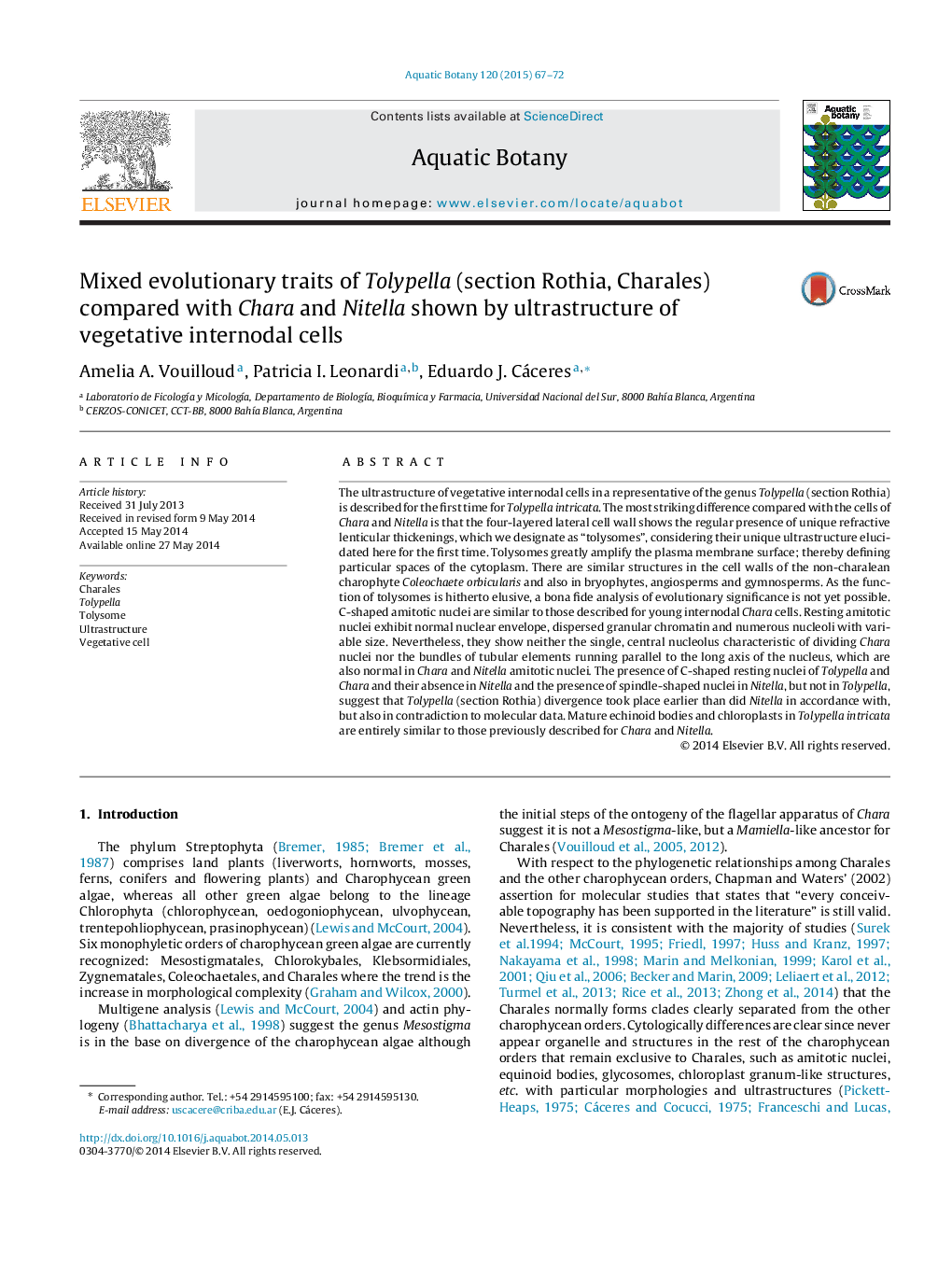| Article ID | Journal | Published Year | Pages | File Type |
|---|---|---|---|---|
| 4527737 | Aquatic Botany | 2015 | 6 Pages |
The ultrastructure of vegetative internodal cells in a representative of the genus Tolypella (section Rothia) is described for the first time for Tolypella intricata. The most striking difference compared with the cells of Chara and Nitella is that the four-layered lateral cell wall shows the regular presence of unique refractive lenticular thickenings, which we designate as “tolysomes”, considering their unique ultrastructure elucidated here for the first time. Tolysomes greatly amplify the plasma membrane surface; thereby defining particular spaces of the cytoplasm. There are similar structures in the cell walls of the non-charalean charophyte Coleochaete orbicularis and also in bryophytes, angiosperms and gymnosperms. As the function of tolysomes is hitherto elusive, a bona fide analysis of evolutionary significance is not yet possible. C-shaped amitotic nuclei are similar to those described for young internodal Chara cells. Resting amitotic nuclei exhibit normal nuclear envelope, dispersed granular chromatin and numerous nucleoli with variable size. Nevertheless, they show neither the single, central nucleolus characteristic of dividing Chara nuclei nor the bundles of tubular elements running parallel to the long axis of the nucleus, which are also normal in Chara and Nitella amitotic nuclei. The presence of C-shaped resting nuclei of Tolypella and Chara and their absence in Nitella and the presence of spindle-shaped nuclei in Nitella, but not in Tolypella, suggest that Tolypella (section Rothia) divergence took place earlier than did Nitella in accordance with, but also in contradiction to molecular data. Mature echinoid bodies and chloroplasts in Tolypella intricata are entirely similar to those previously described for Chara and Nitella.
